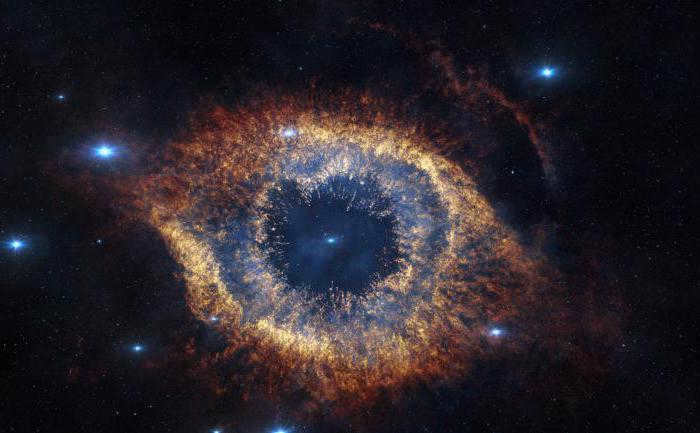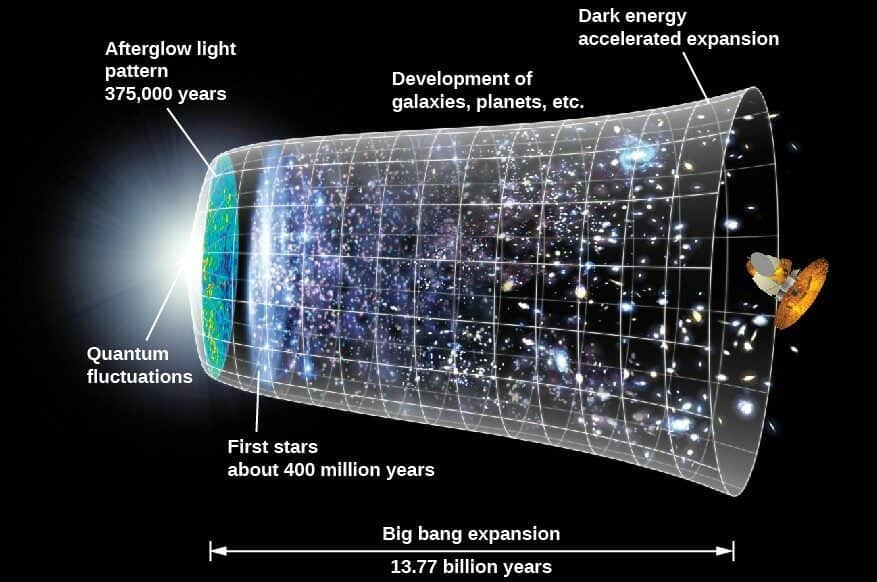Astronomy, a crucial scientific discipline, explores the composition, movement, inception, and evolution of celestial entities.
The primary goals of astronomy encompass: analyzing the positions and trajectories of celestial bodies in outer space, determining their dimensions and forms, investigating the physical structure of celestial entities.
What is the definition of a Galaxy?
A vast, independent assemblage of stars held together by gravitational forces.
What is the definition of the universe?
An immensely expansive expanse of space along with all the entities contained within it.
How did the field of astronomy originate?
It emerged from practical human necessities, namely the requirement for spatial orientation.
What objects and phenomena does astronomy scrutinize?
The objects in the sky include galaxies, stars, planets, and planetary satellites.
Astronomical observations involve the intentional and active collection of information about events happening in the Universe.
The element helium was initially identified through observations made in astronomy.
An optical telescope is specifically created to gather the light emitted by celestial bodies and capture their images. It also enlarges the apparent size of the observed celestial bodies.
| Astronomy Section | Summary |
| Practical astronomy | Coordinates, azimuths, precise time, instruments utilized in the process |
| Celestial mechanics | Investigates the laws of motion of celestial bodies, their masses, and shapes |
| Comparative planetology | Researches the physics of planets within the solar system |
| Astrophysics | Examines stars and the processes occurring on celestial bodies |
| Stellar astronomy | Studies the physical state and processes of bodies |
| Cosmology | Explores the overall laws of the structure and development of the Universe |
| Cosmogony | Explores the origins of celestial bodies |
Astronomy offers solutions to various challenges in astronautics: it helps us make optimal choices and accurate calculations for the orbits of artificial celestial bodies, determine the distances to celestial bodies, select the most suitable time for interplanetary flights, and study matter and the impact of solar energy on humans.
The universe, which consists of countless galaxies, encompasses the entirety of the surrounding world.
The universe
A galaxy is a system of stars, interstellar gas, dust, and dark matter that are gravitationally bound together. All objects within galaxies move in relation to a common center of mass.
The cosmos encompasses the entirety of the physical world that exists. It is vast beyond measure and infinite in duration.
A celestial body is a collection of stars, gases, and particles held together by the force of gravity. The largest celestial bodies have a diameter of up to 3 million light years. The number of stars within these bodies exceeds 1 trillion.
A celestial body is a gathering of matter where the gravitational impact of the external world on each individual component (such as atoms, electrons, and stars) is less significant than the influence exerted by the collective as a whole.
Thus, a celestial body can be understood as a problem of cluster analysis in mathematics.
In essence, if a star is more strongly attracted to a particular celestial body than to others, it is considered a part of that body.
All branches of knowledge are valuable, but it is important to also acknowledge the significance of occult teachings and esoteric wisdom. The concept of “God” represents the universal entity that encompasses everything. This is known as the “Universal Body”. Continuing from there, we have the Neuro-Universe, which includes all parts of the whole, including a system of multidimensional galaxies. One of these galaxies is the “Milky Way”, although there are many others as well. Within the Milky Way, we find our Solar System, which is the temporary home for our existence. It is worth noting that our Solar System is arranged in a slightly unconventional way, perhaps intentionally. According to the law, it should be organized as follows: Sun * Jupiter * Saturn, and so on, from largest to smallest. Interestingly, Mercury is positioned at the very end. Moving further down the scale, we come to the human body, which can be seen as a micro-universe on a cellular level. This understanding aligns with the principle of “Hermeticism”, which states that what is found at the bottom is also reflected at the top. This infinite cycle of self-discovery is represented by the sequence described above.
What exactly is the universe?
The universe came into existence billions of years ago, and thus far, humanity has been unable to definitively determine its true origins. It encompasses all the space that exists, including galaxies, stars, and planets.
Mankind is engaged in the study of the cosmos, yet there is an immense amount of work to be done before a comprehensive understanding of its structure can be achieved. Astronomers from various countries explore new regions each day, but the boundaries of the universe remain beyond their reach. Research is conducted in numerous areas, such as the study of the solar system, neighboring galaxies, attempts to ascertain the overall size of the universe, and the enumeration of celestial objects. Even after decades of tireless efforts, the complete exploration of extraterrestrial space remains an elusive objective.
The universe undergoes constant changes, which add complexity to the task of studying it and providing descriptions of specific components. However, one certainty remains: its vast boundaries are beyond reach for comprehensive exploration.
The composition of the universe
The stars that humans observe are constituent parts of galaxies. The Sun, for instance, is an integral element of the Milky Way, positioned at a considerable distance from other stars. If viewed from an external vantage point, the Milky Way would resemble an enormous disk housing a substantial congregation of stars at its core. Numerous galaxies of this nature are dispersed throughout the Universe.
Fascinating fact: The Milky Way consists of approximately 10 billion stars. It takes 100,000 years for light to traverse the entire expanse of this galaxy.
The distribution of stars in galaxies is not uniform, with concentrated clusters resembling balls found in various regions. Additionally, there are vast expanses within galaxies where no stars are present for many light years.
Surrounding most stars are planets, each with its own distinct appearance, atmosphere, and other characteristics. Some planets even have moons, which are small celestial bodies held together by gravity.
The Universe is home to numerous galaxies, many of which exhibit a spiral shape that is easily discernible due to the arrangement of stars. These galaxies are referred to as protogalaxies. Scientists hypothesize that during their formation, these galaxies rotated rapidly in a circular motion before gradually decelerating. Other galaxies, on the other hand, remained in an elliptical form due to the intense compression of hydrogen gas and did not begin to rotate around a central axis.
Intergalactic space, in addition to the void, can contain a variety of objects, such as asteroid belts, comets, and dwarf planets.
All of these objects are part of the vast Universe. Furthermore, new stars and planets are constantly being born, resulting in the ever-changing cosmos.
Definition of the Universe
In the first century B.C., the Roman philosopher Cicero used the Latin word “universum” to describe the entirety of space with a single term. This expression was so well-liked by other thinkers that they adopted it and began using it in a similar context.
The term “universum” encompassed all known objects, including the Earth, the Sun, distant stars, planets, and living creatures. Today, the term has shed its Latin ending and is pronounced in English as “universe,” which still carries the same meaning of “universe.”
While the Romans were pondering how to define the area surrounding them, the Greeks were also striving to keep pace. They brought forth the term “cosmos,” which can be translated as “world.” As time went on, both terms started to be employed to depict the area surrounding us. Nonetheless, “universe” primarily pertains to galaxies, stars, and planets, whereas “cosmos” pertains to the expanse between them.
Confirmation of the universe’s existence for a specific period
If we accept the concept of the Big Bang theory, the timeline of the universe’s existence starts at the moment when a singularity, compressed to a minuscule size, rapidly expanded. As time passed, galaxies began to occupy this vast expanse, gradually taking on the recognizable forms that we observe through telescopes.
The universe has undergone an extensive journey, spanning not just millions, but billions of years. The notion that it possesses an age first emerged in the 18th century, as people delved into a comprehensive exploration of the Earth and then turned their attention to the stars, striving to acquire an extensive understanding of these celestial bodies.
Did you know that scientists have not ruled out the existence of regions in outer space where objects have the same temperature, as long as they are composed of the same materials?
In the 20th century, astronomers were able to explore alternative methods for determining the age of the Universe. Lemeter hypothesized that space is not infinite and has boundaries, and that it is constantly expanding. Edwin Hubble supported this idea when he observed that neighboring galaxies were gradually moving away from our own Milky Way. By traveling back in time, it would be possible to find a moment when the universe was at its smallest size and had not yet started to expand. This moment would mark the birth of the universe and provide an estimate of its age.
What is the age of the universe?
Edwin Hubble, who had a thorough understanding of the expansion of space, made calculations to determine the rate at which this process is occurring. In 1958, scientist Sandidge incorporated this value into his calculations and estimated that the universe is approximately 20 billion years old.
Subsequently, astronomers made the groundbreaking discovery of relic radiation, which is the residual light from the Big Bang that can still be observed at the edges of space. This discovery provided more accurate measurements of the dimensions of the cosmos. Utilizing the data obtained, scientists were able to compute the estimated age of the universe, which is approximately 13.824 billion years.

This article aims to provide a comprehensive exploration of the universe’s structure, specifically from an esoteric perspective, in an effort to address any lingering questions that may arise.
What is the Universe? Definition
The Universe is a vast expanse that surpasses the limits of both vision and comprehension. It is a realm where planets and solar systems emerge, develop, mature, and eventually perish. Within this boundless entity, an infinite number of galaxies operate under the jurisdiction of higher forces – collectively known as the Universe.
Materialist-pragmatists posit that the Universe originated from a cosmic explosion in the depths of outer space. However, there is a growing acceptance among esotericists that the Universe and all its contents were brought into existence by a Supreme Intelligence and its celestial hierarchy.

Scope of the Universe
What is the extent of the universe? In mathematical terms, our Universe is the fundamental reality. It can be likened to a mathematical point of unknown dimensions.
The scope of the Universe is boundless, with no starting point or outer limits. It can encompass both infinitesimal and enormous magnitudes.
What is the Formation Process of the Universe?
The formation of the Universe is an ongoing process characterized by the continuous creation and destruction of galaxies, making it impossible to assert that it is already fully formed.
According to scientific theories, the formation began with the emergence of a central point that emitted an immense amount of energy, drawing everything in its vicinity. This central point served as the epicenter for the formation of galaxies, which consist of numerous stars orbited by planets and satellites.
What are the methods for visualizing the Universe model and its evolutionary stages?
One way to visualize the model of the Universe is by imagining it as a lattice, with the intersecting points representing individual suns. This lattice is constantly in motion, pulsating and expanding as it evolves. As the Universe grows, it flourishes, but eventually, it reaches a peak stage of development and begins to deteriorate.
During this process, it’s not just individual planets that vanish, but entire solar systems. Because galaxies are interconnected through a rhythmic pattern of development, the collapse of one galaxy triggers a cascading effect, causing neighboring galaxies to collapse as well. This phenomenon occurs over an incredibly long timescale, spanning billions of years in human perception of time.
However, when it comes to the collective consciousness, time is perceived in a completely distinct manner. Once the majority of galaxies within the vast expanse of cosmic space have been obliterated, a signal or directive is transmitted, leading to the birth of a fresh Universe that is inherently more advanced than its predecessor. Consequently, the cycle of Universes continues to evolve perpetually, with no discernible end in sight.
The will of the Supreme Intelligence governs all phenomena occurring in the vast expanse of cosmic space, including the activities taking place on each inhabited planet. By likening the Universe to the human body, one can envision the Supreme Forces as the brain. This aligns with the esoteric doctrine that asserts thought is the precursor to all material manifestations. Just as the brain directs and communicates with organs within the human body, the Supreme Intelligence issues commands and signals to celestial bodies such as galaxies, solar systems, and planets. Consequently, these celestial organs dutifully carry out these directives.
The concept of being controlled by higher powers entails adhering to the fundamental principles of the Universe – the progression of life with a focus on benevolence, affection, happiness, and mutual reverence. In the event that the inhabitants of a particular planet veer off course and allow an excessive amount of negative energy (such as malevolence, transgressions, envy, and conflicts) to permeate their existence, retribution from the higher powers ensues. Consequently, the planet and its accompanying solar system are obliterated. Subsequently, a new system emerges in their place, serving as a replacement for the eradicated one. This is precisely how the Universe maintains equilibrium, much like the intricate operation of an organic entity.
What is the process of creating a habitable planet?
Every time a new Universe is brought into existence, it is designed to be more flawless than its predecessors, taking into account the mistakes made in previous creations. Once a new world is born, its inhabitants are granted a certain degree of freedom to determine their own path of development. The key is to adhere to the fundamental principles of the universe, which include constant growth and advancement, rather than remaining stagnant at lower levels of spiritual enlightenment. By embracing life with love, joy, and gratitude, individuals can ensure their own progress. Similarly, the Higher Mind is in a constant state of evolution, never ceasing to improve itself.
What is the essence of Universal harmony?
The entirety of the Cosmos is in a state of perfect harmony, as it was brought into existence through the divine intention of the Supreme Intelligence. The interplay between celestial bodies, such as galaxies and solar systems, is flawlessly synchronized, and any disruption to this delicate balance is swiftly rectified. Disharmony may manifest on an individual planet due to the misguided actions of its inhabitants. The pursuit of harmony and perfection serves as the primary objective for every sentient being, regardless of whether they reside on Earth or other inhabited realms.
What is the hierarchical structure of the Universe?
Every Universe possesses a primary origin and the Administrator of all that is conceived. This being is known as the Supreme Intellect. It oversees the entire framework of the Universe. The Supreme Authority has its subordinates who govern specific galaxies (referred to as supreme deities of sorts).
What is the general structure and evolution of the Universe?
At the pinnacle of existence resides the Supreme Mind, also known as the Creator who is responsible for all things. Extending from the Supreme Mind to each individual planet are control threads, akin to wires, which gather and accumulate information at the central point of governance. Similar to any mechanism, the Universe can experience failures. Halts and malfunctions occur at various nodes and points within galaxies. It is the Creator’s duty to timely rectify or repair these issues. The advancement to a higher stage of Universe development cannot occur as long as there are planets lagging behind.
Humans and other intelligent entities are unique components in the overall machinery of the Universe. Existence is granted as a probationary phase prior to ascending to a superior state of existence. Hence, the duration of earthly life should be utilized to its fullest potential, in accordance with the universal principles.
How can we articulate the fundamental principles of existence in the Cosmos?
The human mind often perceives laws as restrictions or prohibitions. However, the laws governing the Universe or cosmic existence differ significantly from the rules we are accustomed to. In this global system, the focus is on the necessity and utility of actions, rather than simply prohibiting certain behaviors. Each individual’s thoughts and actions are assessed based on their overall benefit. Importantly, this assessment begins with oneself. In essence, the principles of harmonious existence can be summarized as follows:
It’s important to understand that the moral and ethical standards in the vast cosmic realm are no different from the rules that govern earthly inhabitants. Everything is created by a higher power, and therefore, the fundamental principles of behavior apply universally.
- Always keep in mind that how others perceive you is a reflection of your own outlook on the world;
- Every action should be carried out in a manner that brings pride, not shame;
- When embarking on a new endeavor, treat it as if it could be your last, and give it your all;
- Take into consideration the opinions of others, but always remember that you have the final say;
- Live in a way that allows you to be proud of yourself and allows others to live without hindrance.
Does cyclicity exist in all processes of the Universe?
Without a doubt, the answer is yes. Every event that has occurred in the past, such as hurricanes, volcanic eruptions, wars, epidemics, and more, will happen again in the future. These occurrences can be predicted with a high probability, primarily to minimize their negative impact on the overall life of the planet.
At the interplanetary level, cyclicity occurs in the formation and disintegration of planetary systems, their evolution and advancement. It is important to understand that these cycles repeat themselves while considering the increase or degradation in the level of development.
As a result, once the subsequent phase has been successfully completed, the individuals of this era are granted with a peaceful and commendable existence. However, if the phase has experienced deterioration or individuals have remained stagnant, then this group is met with a variety of catastrophes.
Ways to communicate with and obtain a response from the Higher Forces
First and foremost, it is essential to understand that the individual who genuinely has faith will be listened to. Specifically, I am completely confident and harbor no uncertainty that the formation of everything is the result of the Supreme Creator’s work. It is imperative to live in accordance with the Laws and universal Norms, and to recognize that your conscience is untainted. When seeking assistance or guidance from the Higher Forces, be prepared to observe and comprehend the responses and signals dispatched from higher realms. It is absolutely evident that there is no requirement to visit churches, mosques, synagogues, and other edifices where God is believed to reside.
There is no requirement to provide evidence for the answer. It is advisable to accept it as a fundamental truth.
The presence of God is exemplified by the existence of the universe, earth, air, and celestial space. There is no necessity to seek verification, squandering time and energy on it, but rather for each individual to focus on their own pursuits.
In the past, people’s world was confined to the surface of the Earth. However, with the advancement of technology, humanity has been able to expand its horizons. Nowadays, there is a curiosity about the boundaries of our world and the vastness of the Universe. Unfortunately, it is impossible for humans to truly comprehend the size of the Universe. This is due to the lack of suitable reference points. Even professional astronomers often resort to creating scaled-down models in their minds. It is crucial to accurately understand the dimensions of celestial objects in order to make meaningful comparisons. However, when it comes to solving mathematical problems, these dimensions become mere numbers that astronomers manipulate.

About the composition of the universe
In order to discuss the magnitude of the cosmos, it is essential to first examine what is in close proximity. To begin with, there is a celestial body known as the Sun. Following that, there are the celestial bodies orbiting around it. Alongside them, there are also satellites revolving around certain astronomical objects. And let us not overlook the asteroid belt.
The planets listed here have fascinated people since ancient times due to their accessibility for observation. The study of these planets has played a crucial role in the development of astronomy, the science that explores the structure of the Universe. At the center of our solar system lies a star, the Sun, which is also the largest object within it. In terms of volume, the Sun is a million times larger than the Earth, although it may appear relatively small from our planet due to its great distance.
The planets in our solar system can be categorized into three groups:
- Earth-like group: This group consists of planets that bear a resemblance to Earth in terms of their appearance. Examples include Mercury, Venus, and Mars.
- Giant objects: These planets are significantly larger than those in the Earth-like group and are characterized by their abundance of gases. They are often referred to as gaseous planets. This group includes Jupiter, Saturn, Uranus, and Neptune.
The reason why planets do not “escape” from the Sun is due to the powerful force of gravity. Additionally, their high velocities prevent them from falling into the star. In fact, these celestial bodies are incredibly swift. To illustrate, the Earth travels at a speed of roughly 30 kilometers per second.
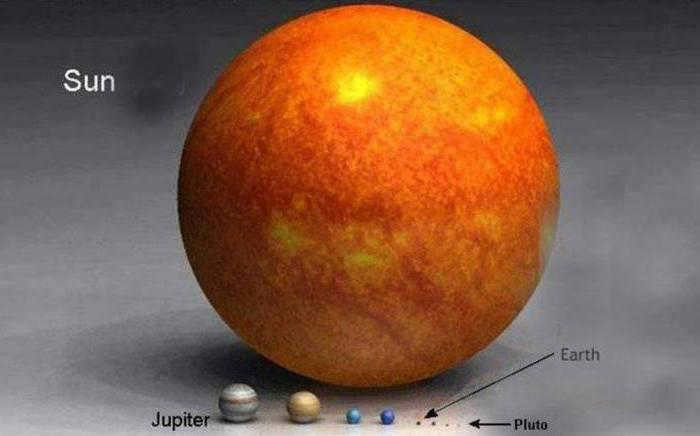
What methods can be used to determine the relative sizes of objects in the solar system?
Before attempting to comprehend the vastness of the universe, it is important to first grasp the immense size of the Sun and the planets. It can be challenging to fathom the scale of these celestial bodies and their distances from one another. The commonly used comparison for the size of the Sun is a billiard ball, which has a diameter of 7 cm. However, in reality, the Sun’s diameter measures approximately 1.4 million kilometers. In this scaled-down representation, the first planet from the Sun, Mercury, would be positioned 2 meters and 80 centimeters away. Meanwhile, the Earth, represented by a ball only half a millimeter in diameter, would be located 7.6 meters from the Sun. Using this scale, Jupiter would be situated 40 meters away, and Pluto would be a distant 300 meters.
When considering objects beyond our solar system, the nearest star is Proxima Centauri. The distance to this star is so great that this simplification proves to be inadequate. This is remarkable, especially when considering that Proxima Centauri is located within our own galaxy. It is truly astonishing to contemplate the grandeur of the universe. As we can observe, its expanse is virtually boundless. There is an inherent curiosity to understand the relationship between Earth and the universe. Upon discovering the answer, it is difficult to fathom that our planet, and even our galaxy, are but minuscule components of the immense cosmos.
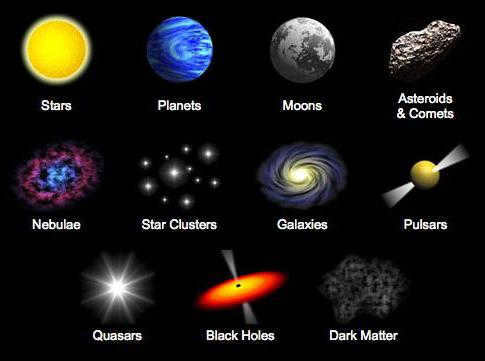
What units are used to measure distances in space?
The measurement of distances in space is a challenging task due to the vast scales involved. While centimeters, meters, and kilometers are commonly used on Earth, they become insignificant within the solar system and even more so in the vast expanse of the Universe. To quantify distances within our own Milky Way galaxy, scientists use a unit called a light-year, which represents the distance that light can travel in one year. It is important to note that light travels at a speed of approximately 300 thousand kilometers per second. Therefore, when converted into kilometers, a light-year is approximately equal to 10 trillion kilometers. The sheer magnitude of this distance is beyond human comprehension. However, when it comes to measuring distances between neighboring galaxies, even the light-year falls short. In this case, scientists employ an even larger unit of measurement known as a parsec, which is equivalent to 3.26 light-years.
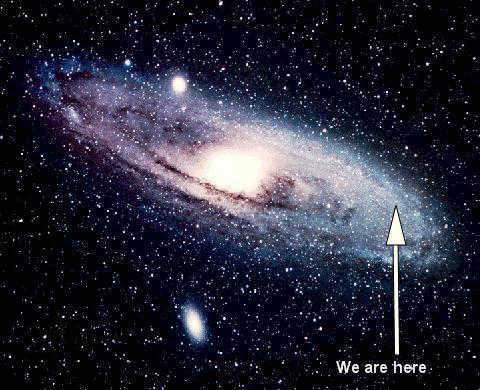
What is the arrangement of the galaxy?
The galaxy is a vast structure consisting of stars and nebulae. Only a small portion of them is visible in the night sky. The organization of our galaxy is highly intricate. It can be likened to a densely compressed ellipsoid that rotates. It comprises of an equatorial section and a core. The equatorial region of the galaxy is primarily composed of gas nebulae and hot massive stars. In the Milky Way, this region is situated in its central area.
The solar system is no different. It is also situated close to the equator of the Galaxy. Interestingly, the majority of stars create a massive disk that spans 100 thousand light-years in diameter and 1500 in thickness. If we were to scale down the solar system to represent it, the size of the Galaxy would be comparable to the distance from the Earth to the Sun. This is a truly astounding measurement. Consequently, the Sun and Earth seem minuscule in comparison to the vastness of the Galaxy.
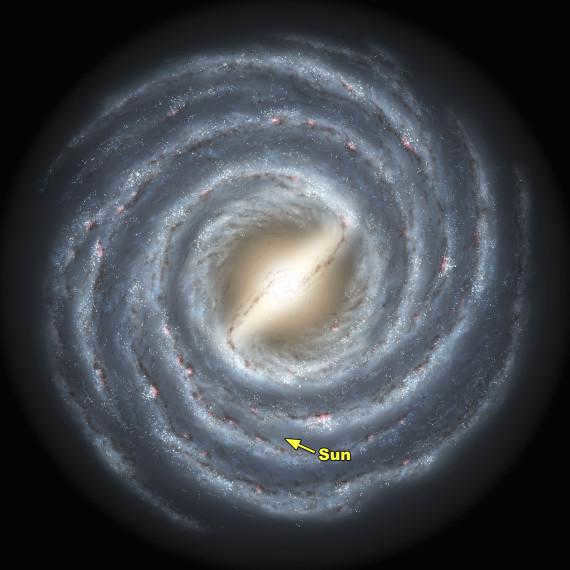
What are the components of the Universe?
Here are the most fundamental ones:
- Stars are enormous, self-illuminating spheres. They originate from a substance composed of a blend of particles and gases, with the majority being hydrogen and helium.
- Dark matter. It refers to the presence of concealed mass. These entities exist in the cosmos and are not directly observable. In simpler terms, they do not emit any form of electromagnetic waves. However, their presence does exert a gravitational pull on other celestial bodies.
- Black holes. Although still not thoroughly understood, they have gained significant recognition. This can be attributed to the portrayal of such entities in works of science fiction. In reality, a black hole is an object from which electromagnetic radiation cannot escape due to the fact that its escape velocity is equal to the speed of light. It is important to note that the escape velocity must be attained by an object in order for it to break free from the gravitational pull of the celestial body.
Furthermore, the Universe also consists of quasars and pulsars.

The enigmatic Cosmos
The cosmos is brimming with unexplored phenomena and undiscovered entities. Furthermore, the revelations that have been made often give rise to fresh inquiries and interconnected enigmas. Even the renowned theory of the “Big Bang” can be categorized among them. In reality, it is merely a speculative doctrine, as humanity can merely speculate about its actual occurrence.
One other enigma revolves around the age of the Universe. It can be estimated approximately through the aforementioned relic radiation, as well as the examination of globular clusters and other celestial bodies. Presently, there is a consensus among scientists that the age of the universe is roughly 13.7 billion years. Another puzzle concerns the existence of life on other planets. It is plausible that favorable conditions for life emerged not only within our solar system, leading to the creation of Earth, but also throughout the vast expanse of the universe, where similar formations likely abound.
What Lies Beyond?
What lies beyond the Universe? What exists beyond the reach of the human eye? Is there something that exists outside of this boundary? If there is, how many universes are there? These are the questions that scientists are still trying to answer. Our world is full of surprises. In the past, it seemed like our world consisted only of the Earth and the Sun, with just a few stars in the sky. But as our understanding of the world expanded, so did our boundaries. It’s no wonder that many brilliant minds have come to the conclusion that the universe is just a part of something even bigger.
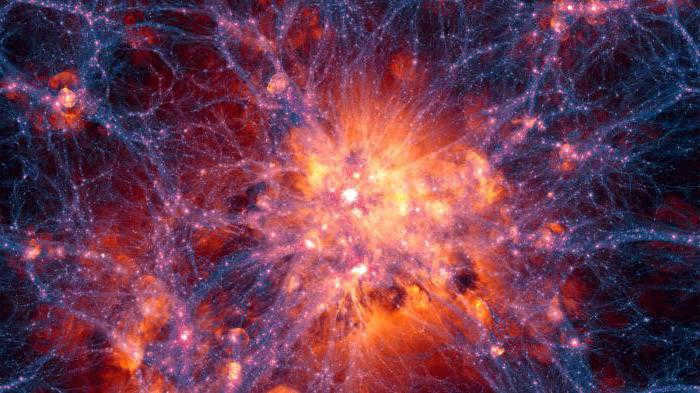
Science and the Essence of Existence
Since ancient times, human beings have had an innate curiosity to explore and understand the world that surrounds us. Throughout the centuries, the most brilliant minds of humanity have dedicated themselves to unraveling the mysteries of our existence. As science continues to progress, we gather more knowledge and information. However, there still remain countless enigmas about the structure of the universe that are yet to be explored. Our current understanding suggests that the universe is comprised of galaxies, but there is also an alternative theory known as the “bubble theory,” which proposes the existence of multiple universes, each one larger than the previous. Could this be true? Only time will tell, and perhaps in a few centuries, scientists will have the answers.
The questions about the composition of the Universe and the uncertainty surrounding the existence of life on other planets or worlds are closely intertwined. According to Arthur C. Clarke, there are only two possibilities: either there is life elsewhere or there isn’t. Despite the lack of evidence, scientists are limited in their ability to explore distant regions of space. It is possible that in the future, advancements in technology will allow for a deeper understanding of the Universe, debunking the notion that it is mostly empty. This could lead to a greater understanding of the structure of space and the emergence of life. Who knows, maybe we will encounter beings similar to ourselves?
The Cosmos: what lies beyond?
Scientists have made significant discoveries regarding the composition of the space that surrounds us. It is predominantly composed of enigmatic substances known as dark energy and dark matter. These entities account for approximately 95% of the total volume of the Universe. However, the specific elementary particles that make up these substances remain a mystery. Despite this, there are currently numerous unverified theories being explored by dedicated researchers. With time, it is expected that this enigma will eventually be unraveled.
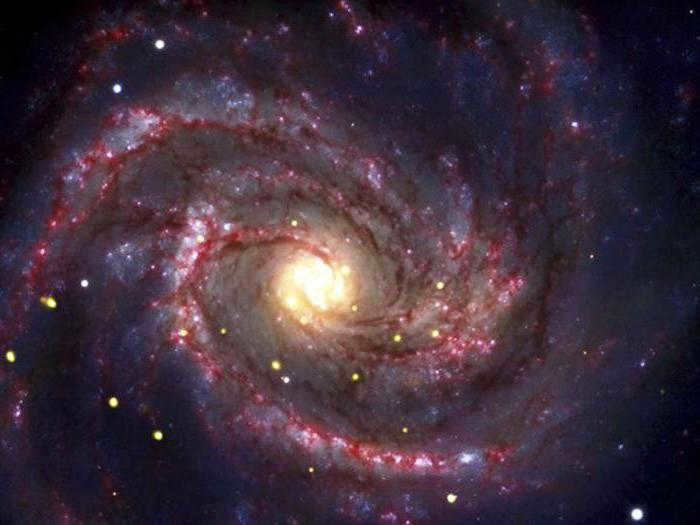
Possibly, to a certain extent, the response to this survey will also provide an insight into the origins of life on our planet. There is an ongoing debate among individuals as to whether it was the result of divine intervention or evolution set in motion by a chance occurrence. Others firmly believe that life arrived on Earth via a cosmic meteorite. It is conceivable that by gaining a deeper understanding of the composition of the space surrounding us, by comprehending the building blocks of the world, the Universe, we may be able to definitively determine the origins of life.
When trying to succinctly explain the composition of the Universe, the average individual may harken back to their high school physics class, where they were taught that the world we inhabit is composed of matter in various states. These states include gases, liquids, solids, and plasmas. However, recent advancements in the field of physics have revealed that this perspective is overly simplistic and does not align with the true nature of reality.
According to modern physicists, matter is known as baryonic matter. This term is used to describe a substance that is composed of baryons, such as protons and neutrons, as well as electrons. Baryons are a mixture of particles that play a vital role in understanding the world, as the entire Universe is made up of atoms. However, the study of baryons is a distinct discipline in itself. If we take a broader perspective and consider the cosmic scale, baryonic matter can be seen as a common and characteristic type of matter in the Universe. It is responsible for the formation of stars, planets, and even our own Earth, as well as everything that exists on it, both living and non-living. When scientists study various waves in the cosmos, they are essentially studying baryonic matter and unraveling the mysteries of the Universe.
Evidence of the Existence of Dark Matter
In the early twentieth century, scientists made a groundbreaking discovery when they observed that the space in the universe was expanding. However, this revelation raised more questions than it provided answers. One puzzling question was the reason behind this expansion, as it seemed to contradict the gravitational forces that should be acting against it. Another mystery was the total mass of the universe and how it could control the expansion process. At that time, scientists were unable to even speculate on the amount of mass required for such processes to occur. Additionally, they couldn’t fathom how this mass would need to be distributed in order to achieve the observed effects.
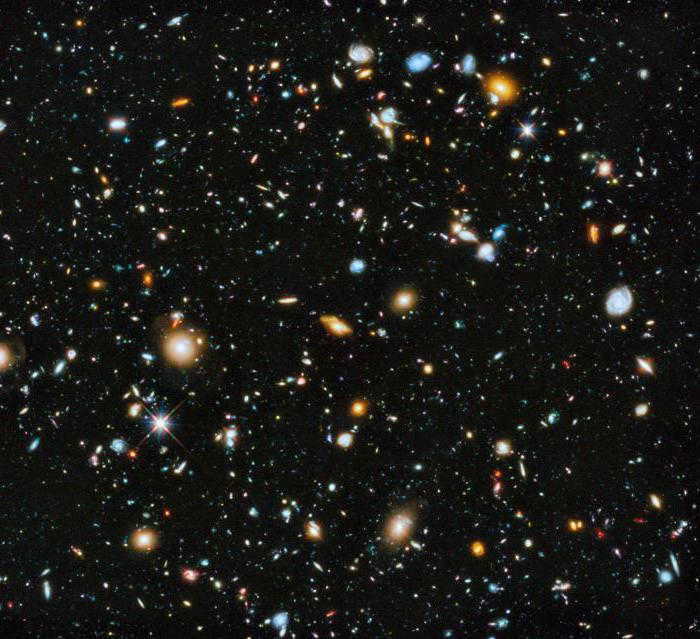
The information provided has sparked controversy and failed to provide a definitive answer regarding the composition of the cosmos and the Universe. Instead, it has created much debate. In 2011, the Nobel Prize in Physics was awarded to scientists who were able to convincingly demonstrate the expansion of the Universe and the existence of dark energy. This recognition marked a turning point, as it confirmed that the scientific community had accepted this perplexing phenomenon as an accurate portrayal of our reality. Presently, scientists have a general understanding of the Universe’s makeup: dark matter and energy. However, the nature of these phenomena remains shrouded in mystery.
Progressing Gradually – Always Moving Forward
When scientists initially demonstrated the possibility of the Universe expanding, it established the direction of astrophysics development for numerous years. However, the solutions to the questions posed during that time still remain elusive. The overall concept of the Universe’s composition, the widely-accepted model based on the acknowledgement of baryonic matter, fails to provide a accurate explanation for both the velocities at which galaxies can rotate and the expansion, which should be dampened by gravitational attraction.
With the help of a telescope, individuals have the ability to observe galactic structures. However, simply visually observing the composition of the Universe does not provide a substantial amount of information to elucidate the patterns of movement among its elements. Several decades ago, scientists proposed the existence of enigmatic dark matter, which was believed to be located in specific regions of the Universe. This mysterious substance was thought to explain the peculiar behavior of the surrounding space, which deviated from known regularities. Nonetheless, proving the composition of the Universe has proven to be an arduous task.
In recent years, there has been a lot of emphasis on astrophysical experiments that have explored the peculiarities of gravity, such as lensing. These experiments have shown that electromagnetic radiation can be curved as it travels, suggesting that the gravitational fields of objects in space may be responsible for this phenomenon. The data collected during these experiments has provided strong evidence for the existence of dark matter, which is thought to be concentrated in clusters of galaxies.
Numbers and statistics
Based on scientific experiments, it has been estimated that approximately five percent of the Universe consists of baryonic matter, which is observable to us. However, dark matter accounts for a mere 27 percent of the total volume, while the remaining 68 percent is attributed to dark energy. This suggests that dark energy and dark matter together make up more than 95 percent of the Universe’s volume.
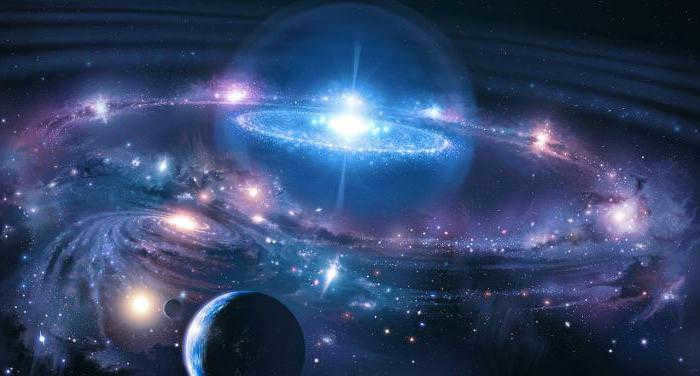
Spooky? Perhaps!
According to the calculations conducted by brilliant minds in the field of astrophysics, only approximately five percent of the space surrounding us is visible to the human eye, even with the aid of all the current available technology. The majority of the universe consists of an enigmatic substance known as dark matter, which remains largely unexplored. Our knowledge regarding dark matter is still undisclosed. Some scientists predict that in the future, it will be revealed that baryonic matter and dark matter can mix together, potentially leading to interactions between the two that can be partially explained by the laws of gravity. However, at present, there is not yet a comprehensive body of evidence to support these claims.
Both curiosity and fear arise in many individuals when considering the aforementioned information – after all, the image that is painted is both awe-inspiring and terrifying. Stars, planets, galactic clusters, and the world as we know it, including ourselves, comprise merely a minuscule portion of the Universe when compared to the vast, unfathomable realm of darkness, which we have little knowledge of, even in the broadest sense.
Currently, the field of astrophysics employs the term “dark matter” to refer to matter that lacks detectable electromagnetic properties using the available techniques of mankind. Essentially, dark matter does not emit photons and therefore does not generate electromagnetic radiation or interact with it, as far as our current means can ascertain.
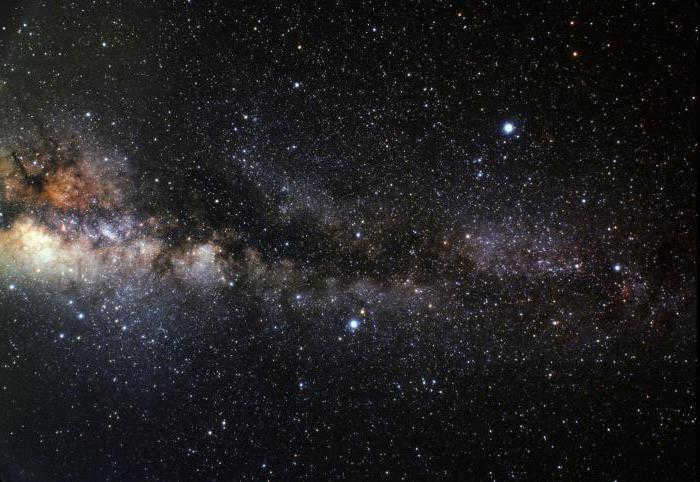
A World of Enigmas
Dark matter is an incredibly fascinating substance, with properties so elusive that they are beyond our current ability to observe or study. The scientific methods we have at our disposal today fall short of providing a definitive explanation for the characteristics and intricacies of dark matter. Likewise, they are insufficient in formulating its true essence. However, scientists have discovered that dark matter possesses mass, as it serves as the source of gravitational effects. Interestingly, there are no elementary particles with charge present in the composition of this enigmatic matter.
Mysterious Phenomena with No Clear Explanations
For quite some time, scientists have been aware of the existence of an enigmatic force that lacks official methods and concrete descriptions. A striking case in point involves two American spacecraft, launched in 1972 and 1983, which fall under the Pioneer category. These vehicles, dubbed the tenth and eleventh in the sequence, were projected to have departed from the solar system by now based on preliminary calculations. However, their actual trajectories have deviated unexpectedly. By closely studying these flight anomalies, scientists have postulated the presence of an undefined, unexplained force that hinders the spacecraft from venturing beyond the solar system.
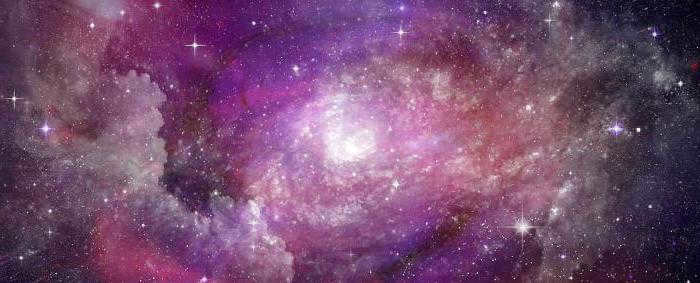
Both the first and the second spacecraft followed the same path, despite the eleven-year gap between them and the utilization of more advanced systems, tools, and communication and propulsion methods in the second vehicle. According to numerous contemporary scientists, the “Pioneers” demonstrate the significant impact of dark matter, including within the star system where our civilization has the fortune to originate.
Currently, there are astrophysicists proposing that the building blocks of dark matter consist of neutrons and protons, meaning that the nature of this mysterious substance is essentially identical to the familiar baryonic matter. According to certain scientists, dark matter should be, if not identical to baryonic matter, then extremely similar. The only distinction is that dark matter lacks electromagnetic characteristics, or its electromagnetic properties are so faint that we are unable to detect and examine them.
It is believed that dark matter consists of atoms and molecules that lack the ability to reflect, emit, or absorb photons, which are responsible for forming an electromagnetic field. As a result, neither humans nor our most advanced devices are able to detect these elementary particles. However, these particles exhibit a high level of persistence and do not undergo decay into lighter elements, as would be expected over the long lifespan of the Universe. Therefore, it can be concluded that there is a certain regularity in the preservation of the gravitational characteristics of dark matter, which has yet to be fully understood. Some scientists have even proposed that there may be a new law, similar to the law of conservation of electric charge, that governs the behavior of dark matter, although this law has yet to be formulated.
There are countless theories
There is not just one explanation for what dark matter is and what characteristics and attributes it possesses. There are numerous possibilities, and it is currently impossible to determine with certainty which theory is correct. A multitude of theoretical frameworks have been formulated, some more successful than others in explaining dark matter, which differs from the familiar baryonic matter.
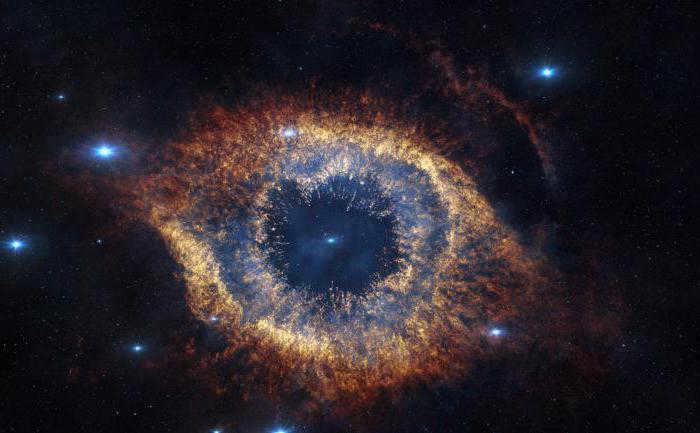
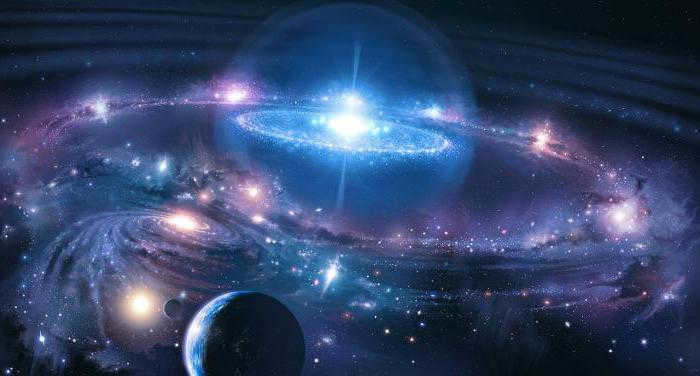
How can we effectively communicate to children the composition of the universe? And how can we convey this information to adults? And ultimately, what exactly is our world made up of? Rarely do we ponder this in our everyday lives, but when such a thought does arise, we must seek an explanation! This is, after all, the essence of understanding, the innate desire to satiate our curiosity. Some may argue that the universe is comprised of energy, while others may assert that it is made up of atoms, chemical elements, and still others may contend that the universe is predominantly empty. So, who is correct? Let us delve into this matter and gain some clarity!
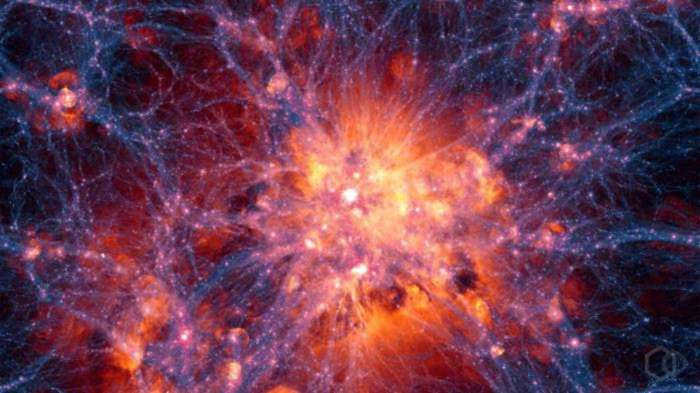
Science and the Exploration of Life
Since ancient times, humans have possessed a distinct desire to understand and explore the world around them. Throughout the centuries, the most enlightened minds of humanity have pondered over the composition of the world we inhabit. While science continues to advance and accumulate knowledge, there are still countless mysteries that remain unsolved about the structure of the universe. One prevailing theory posits that the universe consists of galaxies, but an alternative hypothesis suggests the existence of “bubbles” – the possibility of multiple universes, each one larger than the previous. Will scientists uncover the truth in the coming centuries? Only time will tell.
Questions about the composition of the universe and the possibility of extraterrestrial life are closely intertwined. According to Arthur C. Clarke, there are only two possible answers: either there is life elsewhere in the cosmos, or there isn’t. Currently, there is no concrete evidence of life beyond our planet, but limited resources have hindered extensive space exploration. It’s possible that in the future, our understanding of the universe being predominantly empty will be challenged, leading to a deeper understanding of spatial structure and the nature of life. Perhaps, we will even encounter beings similar to ourselves.
The Universe: What Lies Beyond?
Scientists have made significant progress in understanding the composition of the universe. It is now known that the majority of the space around us is comprised of dark energy and dark matter. These mysterious entities make up approximately 95% of the total volume of the universe. The exact nature of these particles remains a mystery, but researchers are actively exploring various theories to unravel their secrets. With ongoing advancements in scientific knowledge, it is likely that the puzzle will be solved in the future.
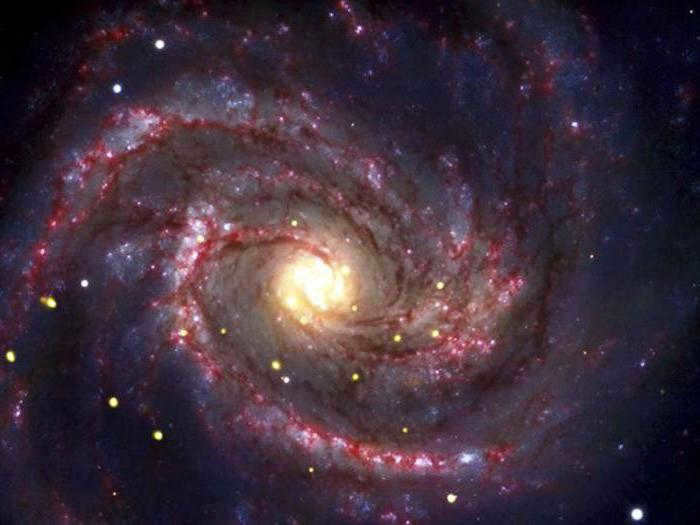

Possibly, to some extent, the response to this inquiry will also provide insight into the origins of life on our planet. There is an ongoing debate among individuals as to whether it was the result of divine intervention or evolution triggered by random chance. Others firmly believe that life arrived on Earth via a cosmic meteorite. It is conceivable that by gaining a deeper understanding of the composition of the space surrounding us, by comprehending the building blocks of the world, the Universe, we may be able to definitively determine the origins of life.
When considering how to succinctly describe the composition of the Universe, the average individual may often harken back to their physics class, where they were taught that the world is made up of matter in one of its common states: gas, liquid, solid, or plasma. However, recent advancements in physics have revealed that this perspective is overly simplistic and does not align with the true nature of reality.
According to contemporary physicists, matter is composed of baryonic matter. This term is used to describe a substance made up of baryons and electrons. Baryons, in turn, refer to a combination of neutrons and protons. Although the study of baryons is closely linked to our understanding of the world, as the universe is comprised of atoms, it is still considered a distinct discipline. Taking a broader perspective and looking at the cosmic scale, we can recognize that baryonic matter is a substance that is quite common, typical, and characteristic of the universe. It is the building block for stars and planets, including our own Earth, as well as everything that exists on it, both living and non-living. When exploring the composition of the cosmos and the universe, it is important to acknowledge that scientists are studying baryonic matter specifically through the observation of various waves.
Existence of Dark Matter
In the 1930s, scientists made a groundbreaking discovery while studying the composition of the cosmos and the universe. They found evidence that space is expanding, which raised numerous questions about the nature of this expansion. One of the key questions was how gravitational forces could be counteracted to allow for this growth. Additionally, the total mass of the Universe, which determines its composition, should also play a role in controlling the expansion. However, scientists at that time were unable to speculate on the amount of mass required for these processes to occur. Furthermore, they couldn’t envision how this mass should be distributed to achieve the desired effect.
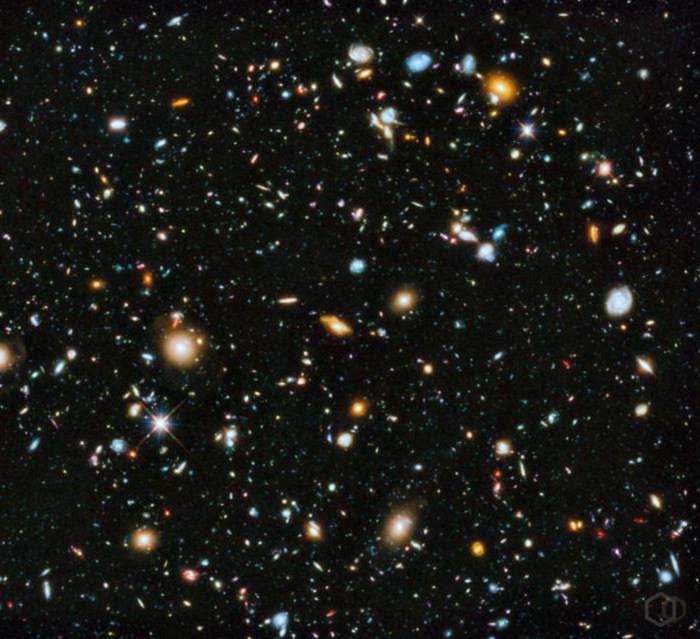

This contentious information not only failed to provide a definitive and accurate answer to the inquiry of the composition of the cosmos and the Universe, but also generated significant discord. In 2011, the Nobel Prize in Physics was bestowed upon the scientists who managed to convincingly demonstrate that the Universe is, in fact, undergoing expansion. Additionally, they uncovered the existence of dark energy. It was only with the presentation of this prestigious award that it became apparent that the scientific community had come to terms with this perplexing phenomenon, while still striving to accurately describe the occurrences that surround us. Presently, scientists possess a general understanding of the constituents of the Universe: dark matter and energy. However, the true nature of these phenomena remains a mystery shrouded in secrecy.
Step by step – only forward
When scientists initially demonstrated the ability of the Universe to undergo expansion, it established the trajectory of astrophysics development for numerous years. However, the solutions to the inquiries raised during that period remain elusive to this day. The overall concept of the composition of the Universe, the widely accepted model that incorporates the recognition of baryonic matter, fails to provide an accurate explanation for both the velocity at which galaxies can rotate and the expansion that should be dampened by gravitational attraction.
By utilizing a telescope, one has the ability to observe the structures within our galaxy. However, simply visually observing the composition of the Universe does not provide a substantial amount of information to adequately explain the patterns of movement exhibited by its elements. Several decades ago, the scientific community proposed the existence of an enigmatic substance known as dark matter, which was believed to be situated in specific locations throughout the Universe. It was postulated that this mysterious matter could potentially be the cause of the abnormal behavior observed in the surrounding space, which deviated from the known regularities. Nevertheless, proving the true composition of the Universe has proven to be an immensely challenging task.
In recent years, astrophysical experiments have been dedicated to exploring the unique aspects of gravity, such as lensing, which reveals that electromagnetic radiation bends slightly as it travels. The gravitational fields of celestial objects are believed to contribute to this phenomenon. The data collected from these experiments serves as the primary proof for the presence of dark matter, which is thought to be composed of galaxy clusters.
Numbers and Statistics
Based on scientific experiments, it has been estimated that approximately 5% of the universe consists of baryonic matter, which is observable. However, dark matter makes up a substantial 27% of the total volume. The remaining 68% is attributed to dark energy. These figures indicate that dark energy and dark matter together account for over 95% of the universe’s volume.

Is it Spooky? Perhaps!
According to the calculations conducted by astrophysicists, only approximately five percent of the surrounding space is visible to humans, even with the aid of current technology. The majority of the universe is composed of mysterious dark matter, an inexplicable substance that remains largely unknown to us. Some scientists speculate that the future may reveal a combination of baryonic matter and dark matter, with the potential for interaction between the two, partially explained by the laws of gravity. However, at present, there is not enough substantial evidence to fully support these claims.
The information presented above not only piques one’s curiosity but also instills a sense of fear. The imagery created is both awe-inspiring and terrifying. Celestial bodies such as stars, planets, and galactic clusters, as well as the world we inhabit and ourselves, are but a minuscule fraction of the vast expanse of the Universe. In comparison, the unknown dark realm remains largely unexplored and enigmatic, leaving us with only a vague understanding, if any, of its existence.
Currently, the concept of “dark matter” in astrophysics is used to refer to matter that lacks any detectable electromagnetic properties using the currently available techniques. Essentially, it does not emit photons and therefore does not generate any electromagnetic radiation or interact with it (as far as our current capabilities allow us to determine).
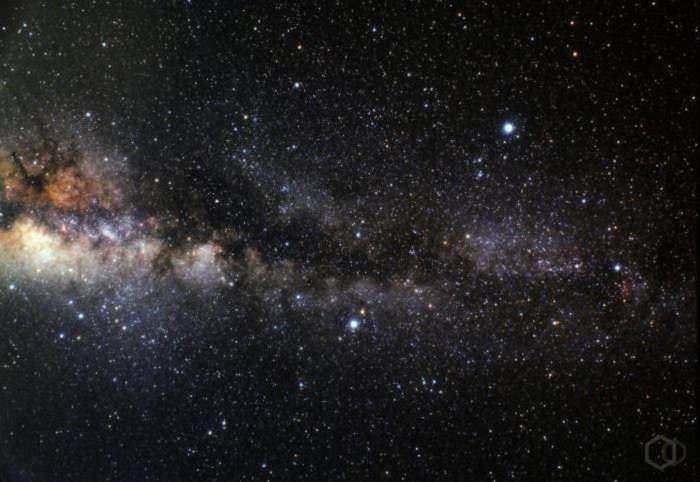
The Enigma of the Universe
Dark matter is an incredibly intriguing substance with properties that remain elusive and difficult to study in our current stage of human civilization. The scientific methods available to us today fall short in providing a clear explanation of dark matter’s characteristics and peculiarities, as well as defining its essence. However, scientists have discovered that dark matter possesses mass, serving as the source of gravitational effects. Curiously, this matter lacks any elementary particles with charge in its composition.
Mysterious Enigmas with No Solutions
For a significant period of time, scientists have been aware of the existence of an enigmatic force, yet there have been no official means or methods to substantiate its presence or expound upon its characteristics. A striking case in point can be found in the two American spacecraft launched in 1972 and 1983, both falling within the Pioneer classification and designated as the tenth and eleventh in the series. According to initial calculations, these vehicles should have long departed from the solar system by now, but in reality, their trajectories have inexplicably deviated. By closely monitoring the peculiarities of their flights, scientists have hypothesized the existence of an elusive, unexplained force that hinders the spacecraft from venturing beyond the solar system.
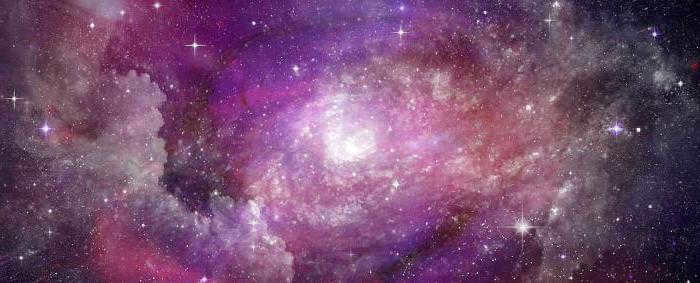

Both the first and second spacecraft followed the same path, despite being launched eleven years apart and using more advanced systems, technologies, and communication methods in the second spacecraft. Many modern scientists believe that the “Pioneers” demonstrate the significant impact of dark matter, even within the star system where our civilization originated.
Currently, there are some astrophysicists proposing that the building blocks of dark matter consist of neutrons and protons. In other words, the fundamental nature of this enigmatic substance is identical to that of baryonic matter, which is familiar to us. According to some experts, dark matter should be either analogous to or closely related to baryonic matter. The only distinction is that dark matter lacks electromagnetic characteristics or exhibits them so faintly that we are unable to detect and investigate this phenomenon.
Presumably, dark matter consists of atoms and molecules that do not possess the ability to reflect, emit, or absorb photons, thus forming an electromagnetic field. As a result, neither humans nor our most advanced devices can detect the presence of these elementary particles. However, these particles exhibit an increased persistence and do not decay into lighter elements like other particles do. This suggests that there is a regularity in the preservation of the gravitational characteristics of dark matter that is yet to be fully understood. Some scientists even propose that there may be a new law, similar to the law of conservation of electric charge, that governs dark matter. Further research is needed to uncover the true nature of dark matter and its gravitational properties.
The theories are diverse
The aforementioned proposition is just one of many conjectures regarding the true nature of dark matter and its inherent characteristics and attributes. A vast array of possibilities exist, and it remains uncertain as to which theory will ultimately prove correct. Numerous theoretical frameworks have been formulated, each with varying degrees of effectiveness in elucidating the nature of dark matter, which is distinct from the familiar baryonic matter.
